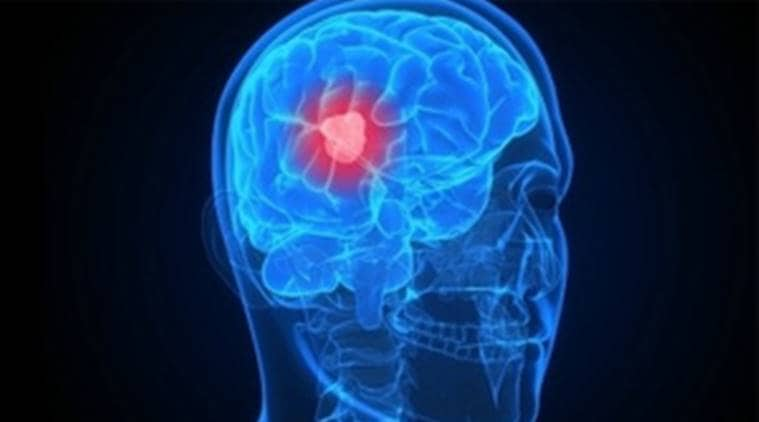
World Brain Tumor Day is observed on the June 8 every year with the objective of spreading awareness and educating people about the same.

World Brain Tumor Day is observed on the June 8 every year with the objective of spreading awareness and educating people about the same. Brain tumors are fatal, with majority of the patients dying within 9 to 12 months of diagnosis. Every year 40,000 to 50,000 people are diagnosed with brain tumors, out of which 20 per cent are children.
On the day, Dr R K Jain, pediatric neurology at Fortis Memorial Research Institute shares that there are more than 120 different types of brain tumors that exhibit different symptomatology, and the nomenclature of which depend upon the area of the brain from which they originate. Below, he shares the symptoms, risk factors and treatment.
Understanding tumors of the brain
A brain tumor is a mass of abnormal cells in the brain. The skull, which encloses the brain, is very rigid and any growth inside such a restricted space can cause problems.
Also Read | Jawless fish may hold key to effective brain cancer treatment
Symptoms of brain tumour one shouldn’t ignore:
Symptoms of brain tumour depend on various factors and they vary depending on the exact part of brain which is affected. Some symptoms develop slowly over time.
Following are some symptoms of brain tumour which you should never ignore. If you ever find any of the symptoms in you or your dear ones, do consult your doctor as soon as possible:
Persistent headaches:
Whenever we talk about brain tumour, the first symptom that comes to our mind is headache; a severe persistent headache, especially when associated with vomiting that relieves the ache. This is usually known as the primary signal of brain tumour. If you are having headache for more than 4-5 days, consult your doctor.

Seizures:
Seizures are symptoms of a brain problem. They happen because of sudden, abnormal electrical activity in the brain. The late onset of a seizure is an indicator of brain tumour.
Progressive weakness or one-sided paralysis:
One-sided paralysis is known as hemiplegia. One-sided weakness is known as hemiparesis. In case of hemiplegia, only one side of the body gets paralysed.
Vision or speech problems:
A tumour near the optic nerve causes blurred or double vision. It may also cause abnormal eye movements or double vision depending on the exact location and size of the tumour. Some brain tumours may cause speech difficulties.
Memory problems or behavioural changes:
Brain tumours usually effect cognitive abilities which results in memory problems, concentration problems, and may also lead to confusion. It also changes the way a person behaves. You may find him/her frustrated on very illogical things.

Risk Factors:
*Family History: Brain tumors can be inherited even though it is extremely rare (less than 10% of all cancers are passed on from one generation to another).The genetic makeup of a person can cause a predisposition to cancer.
*Age Factor: Most types of brain tumors increase with age.
*Race: Brain tumors are more common among Caucasians.
*Exposure to Chemicals: Exposure to certain chemicals (carcinogenic) can also increase the risk of brain cancer. People who are exposed to ionizing radiation are highly prone to brain tumors.
*Frequent use of cellphones: Preliminary investigations bring to light how the radiofrequency energy from cellphones is capable of causing brain tumors; however the results on this are inconsistent.
Types of Tumor:
*Malignant
*Benign
Malignant tumors are:
*Primary (originate in the brain): Develop from the brain cells, the brain membrane, nerve cells and glands.
*Metastatic (originate in another part of the body and spread to the brain) in nature: Develop from lung cancer, breast cancer, kidney cancer and skin cancer.
Also Read | Brain tumour facts and symptoms you should not ignore
The World Health Organization has created a standard by which all tumors are classified. Tumors are given a name based on the cells where they arise, and a number ranging from 1 to 4. The number is called the grade and it represents how fast the cells can grow and are likely to spread. This is critical information for planning treatment and predicting outcomes.
Diagnosis:
Several imaging tests are used to conduct a diagnosis for brain tumors. These include:
*Neurological Examination
*PET Scan
*Cerebral Angiogram
*MRI
*MRI Spectroscopy
*MRI Contrast
*Perfusion MRI
*Functional MRI
Treatment:
Treatment options and recommendations depend on several factors:
*Size of the tumor
*Grade of the tumor
*Type of tumor
*Location of the tumor and whether it is putting pressure on vital parts of the brain
*The extent of the tumor
*The patient’s preferences
*The patient’s overall health
Surgical Intervention Includes:
*Microsurgery
*Endoscopic surgery
*Image guided surgery
*Intraoperative monitoring
Along with surgery, radiation therapy, chemotherapy and targeted therapy can be used as treatment options.
The frequency of brain cancer increases with age, with more occurrences in individuals aged 65 or older. The age factor varies depending on the cell type and location of the tumor. There are several environmental factors which have the potential to cause cancer of the brain. In addition to this some people with compromised immune systems have an increased risk of developing lymphomas of the brain. Lifestyle changes such as regular physical activity, eating nutritious food and regular intake of water should be inculcated to make the body stronger and more resistant to the development of tumors.
There is no specified known cause for brain tumors. There isn’t even a set age range within which a person can develop a tumor. While a lot of information regarding this condition remains relatively unknown, several strides have been made to treat it effectively with a reduced rate of morbidity and mortality.
Source: Read Full Article